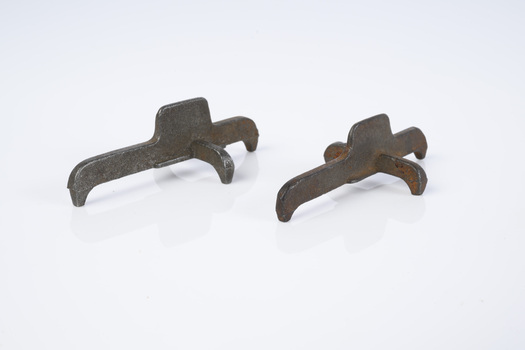Historical information
The tips of each cutting tooth of a saw are bent (set) slightly away from the plane of the saw. Alternate teeth are set (and sharpened) in opposite directions. The set helps prevent the saw binding in the wood by cutting a kerf (the slot in the wood) that is slightly wider than the saw's thickness. Too little set and the saw binds; too much set results in more work to cut the wider kerf and could lead to too much side movement of the saw and a curving cut.
The saw set gauge is used to measure the set of the saw tooth. The amount of set can be from almost nothing in dry hardwood to perhaps 1mm for some softwoods.
The spider has three legs of the same length and a longer fourth leg. On a flat surface, the three short legs contact the surface while the long leg is just shy of the surface by the degree of 'set'. The spider is placed such that the three short legs are on the face of the saw with the longer leg touching the tip of the tooth - the tooth is bent to match the gauge.
Physical description
metal spiders used to set the teeth of crosscut saws




